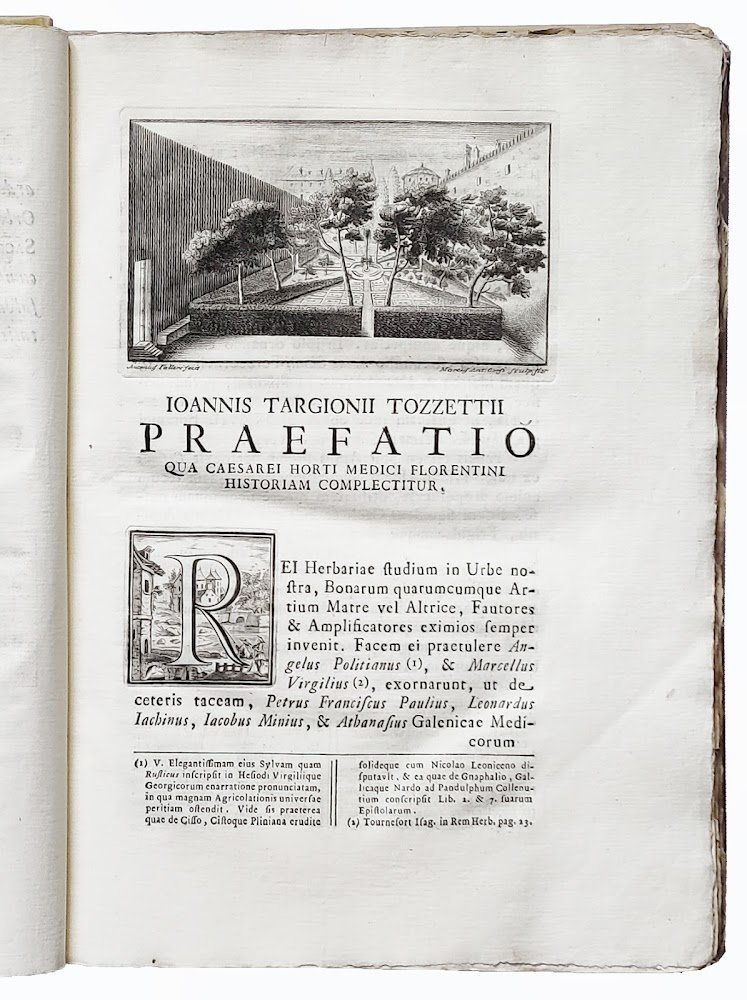
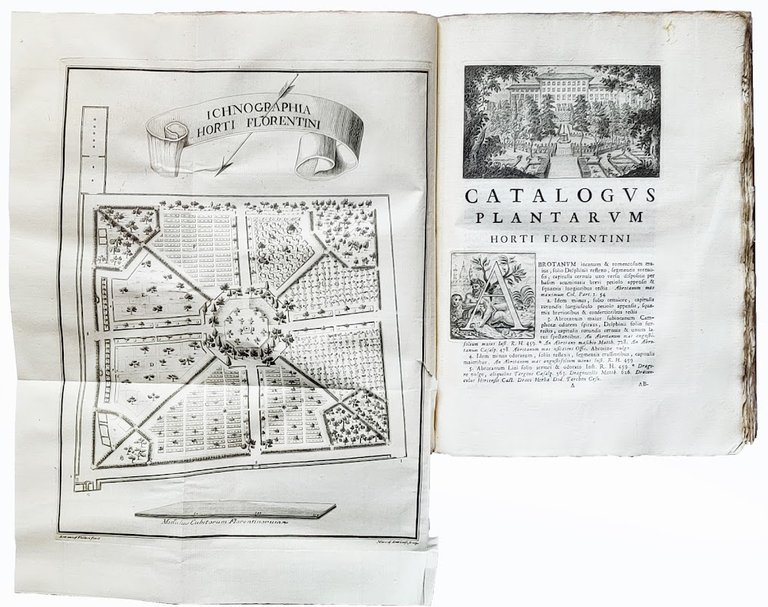
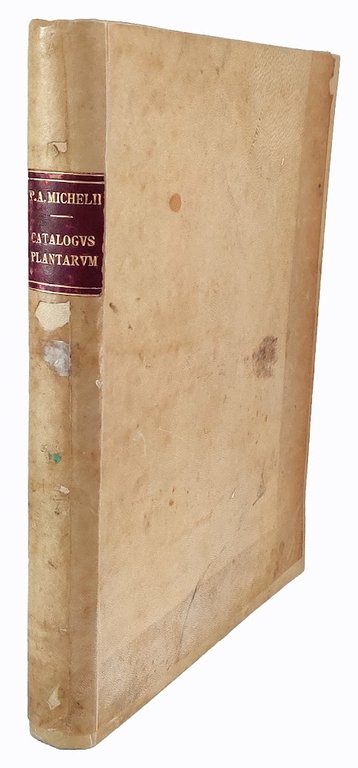
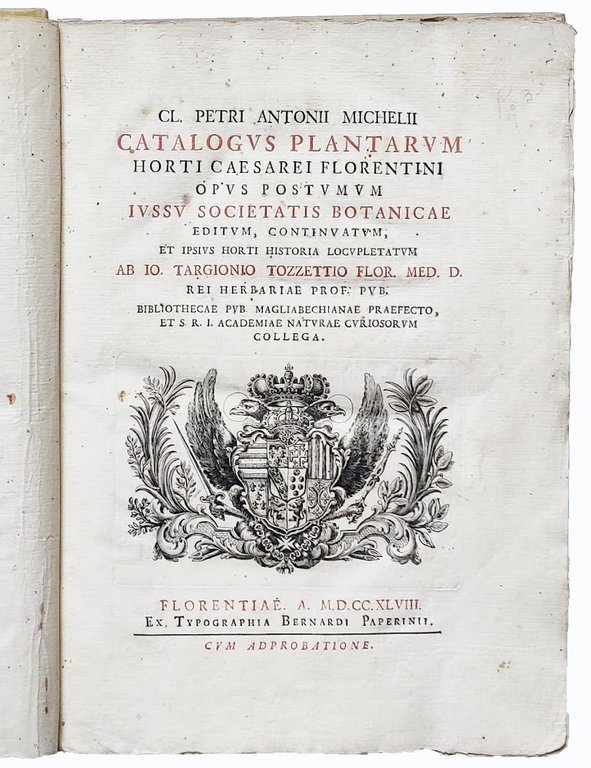
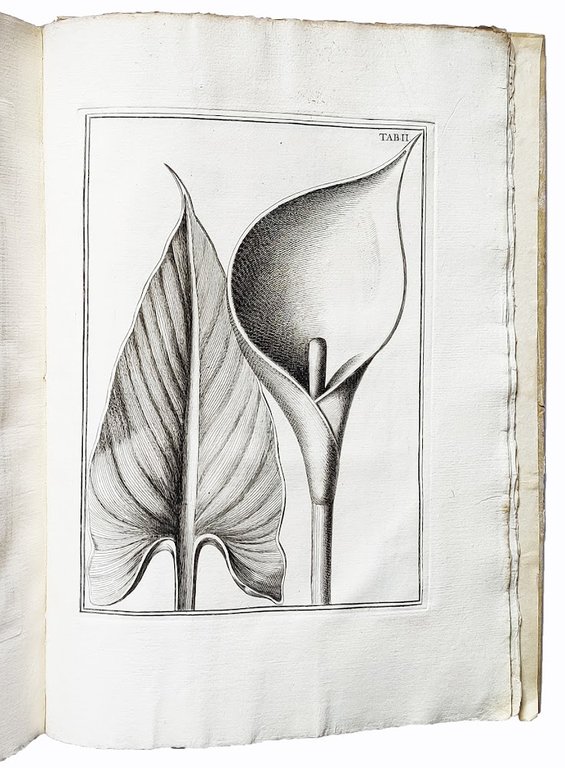
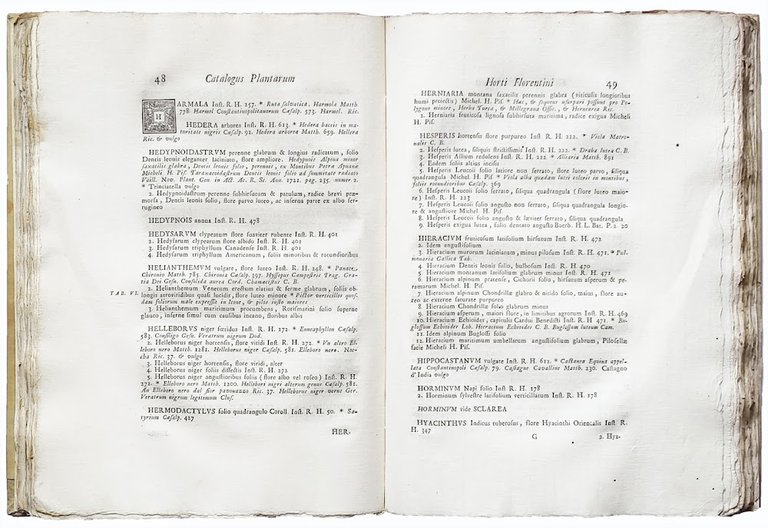
Libri antichi e moderni
MICHELI, Pier Antonio (1679-1737)-TARGIONI TOZZETTI, Giovanni
Catalogus plantarum horti caesarei Florentini opus postumum iussu Societatis botanicae editum, continuatum, et ipsius horti historia locupletatum ab Io. Targionio Tozzettio
Bernardo Paperini, 1748
2400,00 €
Govi Libreria Antiquaria
(Modena, Italia)
Le corrette spese di spedizione vengono calcolate una volta inserito l’indirizzo di spedizione durante la creazione dell’ordine. A discrezione del Venditore sono disponibili una o più modalità di consegna: Standard, Express, Economy, Ritiro in negozio.
Condizioni di spedizione della Libreria:
Per prodotti con prezzo superiore a 300€ è possibile richiedere un piano rateale a Maremagnum. È possibile effettuare il pagamento con Carta del Docente, 18App, Pubblica Amministrazione.
I tempi di evasione sono stimati in base ai tempi di spedizione della libreria e di consegna da parte del vettore. In caso di fermo doganale, si potrebbero verificare dei ritardi nella consegna. Gli eventuali oneri doganali sono a carico del destinatario.
Clicca per maggiori informazioniMetodi di Pagamento
- PayPal
- Carta di Credito
- Bonifico Bancario
-
-
Scopri come utilizzare
il tuo bonus Carta del Docente -
Scopri come utilizzare
il tuo bonus 18App
Dettagli
Descrizione
First edition published posthumously, with a dedication to the grand duke of Tuscany and a long preface on the history of the garden by Micheli's pupil and successor Giovanni Targioni Tozzetti.
The Orto Botanico of Florence was founded on 1 December 1545 by Cosimo I de' Medici. It is Europe's third oldest botanical garden after those in Pisa and Padua, and was laid out by the landscape gardener Niccolò Pericoli to a botanical system and plantings chosen by Luca Ghini. However, it was not until 1718, when Micheli became the garden's first director, that it really came to prominence.
Born in Florence in 1679, Pier Antonio Micheli came to the study of plants thanks to two scholars of the Vallombrosa Abbey, B. Biagi and B. Tozzi. The latter, in particular, was instrumental in introducing Micheli to the Florentine scientific milieu, where he found a powerful patron in L. Magalotti, who introduced him to Cosimo III. Between 1703 and 1710 Micheli made numerous journeys on behalf of the grand duke. The most fruitful for improving his botanical knowledge and forging scientific relationships outside Tuscany was the trip that took him to Rome and then to the Kingdom of Naples in 1710. In 1716 Micheli became a promoter of the Florentine Botanical Society. Two years later he obtained the direction of the botanical garden of S. Marco. In 1729 he published in Florence his best-known work, the Nova plantarum genera iuxta Tournefortii methodum disposita, quibus plantae MDCCC recensentur, scilicet fere MCCC nondum observatae, reliquae suis sedibus restitutae, which he planned to follow up with a second part, that, however, he never managed to complete. In the autumn of 1736 Micheli made a trip to the territory of the Venetian Republic and in particular to Mount Baldo. The fatigues of the trip proved fatal to him, and he died in Florence on January 2, 1737. Micheli also experimented on fungi and deduced that they reproduced through spores, and not from spontaneous generation. He was also an avid plant and mineral collector (cf. A. Ottaviani, Micheli, Pier Antonio, in: “Dizionario Biografico degli Italiani”, vol. 74, 2010, s.v.).
Italian Union Catalogue, IT\ICCU\UBOE\074377; Gentilini 1985, 158; Pritzel, 6203; Nissen BBI, 1305; Moreni, II, pp. 76-77.

